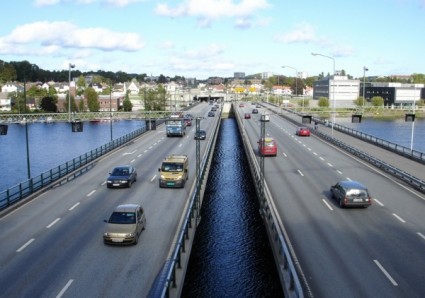- Free Initial Consultation: (954) 761-3641 Tap Here To Call Us
NHTSA: V2V Technology Could Prevent Thousands of Car Accidents

The National Highway Traffic Safety Administration is proposing a rule that would accelerate the kind of vehicle-to-vehicle technology that would allow cars to “talk” to one another, and ultimately prevent accidents.
Under the proposed rule, all new cars and like trucks would communicate wirelessly not just with one another, but with traffic lights and other roadway infrastructure. NHTSA officials say the technology has the potential to transform driving and dramatically slash the number of traffic deaths every year. The rule would be mandatory for all new model vehicles, if the rule is approved.
So how exactly would this work? Well first, it’s important to outline what V2V is. It is a type of crash avoidance technology that hinges on the communication of information between nearby vehicles that can warn drivers about possibly hazardous situations that might lead to a collision. For instance, V2V technology could alert a driver that the vehicle up ahead is breaking, so they need to slow down. It could also inform a motorist that it isn’t safe to go through an intersection because another vehicle – one that can’t yet be seen by the driver – is fast approaching that same intersection. The information communicated would involve short-range data (about 300 meters) that would include other vehicle information such as:
- Location
- Speed
- Direction
- Breaking status
This information exceeds what can be gleaned from the current cameras, radar and ultrasonic sensors that many vehicles are currently affixed with. V2V communications can also detect a threat much sooner than camera sensors or radar. In fact, the data is shot out at a rate of about 10 times per second.more
The proposed rule is actually more than a decade in the making, and involves input from auto manufacturers, as well as state, federal and local transportation departments and academic institutions.
Those who study the technology say it will provide a 360-degree awareness of what’s happening all around us, which could prevent or mitigate the severity of approximately 80 percent of car accidents that don’t involve alcohol or drugs. There are approximately 30,000 fatal crashes in the U.S every year, and roughly a third of those involve drunk drivers.
The Alliance for Automobile Manufacturers has said it is reviewing the exact proposal, but overall agrees that V2V is likely to be an asset offered complementary to other automated safety features that are available in many new model vehicles. The proposal would require all of these systems to essentially speak the same language with some standardized messages so that drivers wouldn’t have a false sense of security just because another nearby vehicle didn’t “talk” to theirs.
In addition to helping to prevent crashes, the technology also has the potential to help reduce congestion. Traffic lights would have an idea of how long they should stay green because they would be able to sense the level of traffic. That could help lower unnecessary wait times. The technology could also alert drivers if there is a a great deal of congestion on a planned route, allowing motorists the opportunity to plan an alternate route.
Call Fort Lauderdale Injury Attorney Richard Ansara at (954) 761-4011. Serving Broward, Miami-Dade and Palm Beach counties.
Additional Resources:
Government to Require Cars Be Able to Talk to Each Other, Dec. 13, 2016, Associated Press
More Blog Entries:
Delray Beach Intersection Won’t Get New Light, Despite Fatal Crash, Dec. 10, 2016, Fort Lauderdale Car Accident Lawyer Blog













